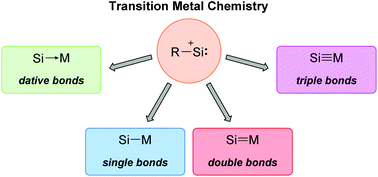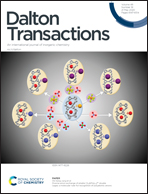Lewis base-stabilized silyliumylidene ions in transition metal coordination chemistry
Abstract
Base-stabilized silyliumylidene ions are starting to gather more and more interest from academia and industry because of their intriguing possibilities as synthons in organosilicon chemistry, facile activation of small molecules and possible applications in transition metal-free catalysis. Furthermore, with the presence of a stereochemically active lone pair on the low-valent silicon center, they can act as ligands in transition metal complexes comparable to carbenes and silylenes. Utilization of the incredible synthetic potential of Si(II) cations – the possible formation of up to three new bonds in a single reaction – can also give facile access to dative, single, double and triple bonds between silicon and a transition metal. Over the past years we have invested in further developing the area of base-stabilized silyliumylidene ions and have contributed significantly to their potential coordination chemistry and their intriguing reactivities with transition metals. This Frontier article discusses the recent developments in the chemistry of base-stabilized Si(II) cations as ligands and highlights our contributions to this field.

- This article is part of the themed collection: 2020 Frontier and Perspective articles


 Please wait while we load your content...
Please wait while we load your content...